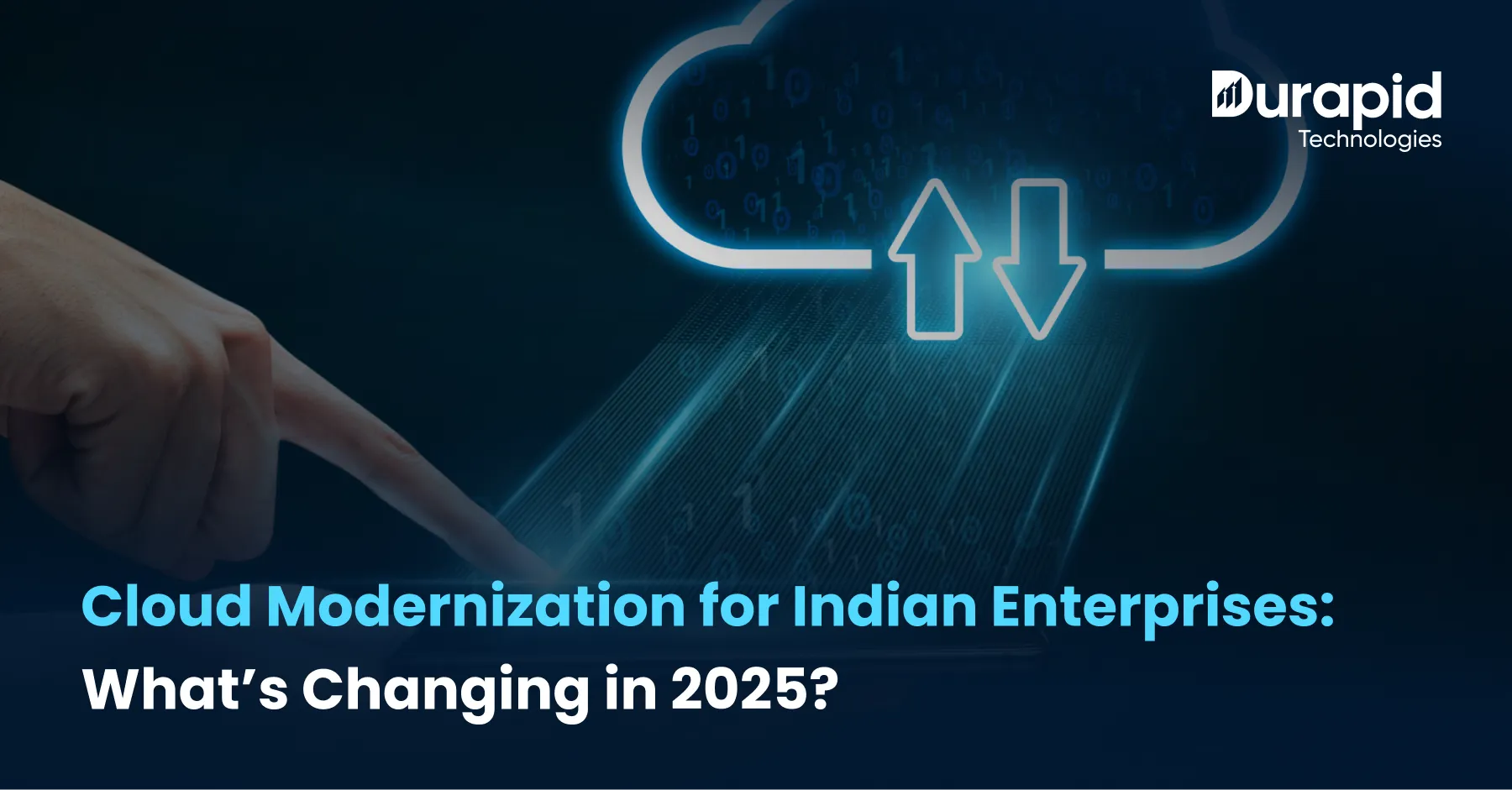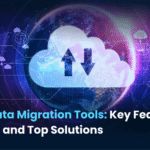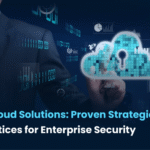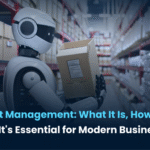Cloud Modernization for Indian Enterprises: What’s Changing in 2025?

Your CFO just asked you a simple question: “Why are we still spending lakhs on servers that sit idle 60% of the time?”
And honestly? You don’t have a good answer.
If you’re running an Indian enterprise in 2025 and still thinking cloud is “just another IT project,” you’re missing the point entirely. This isn’t about moving your email to Gmail or backing up files to Dropbox.
This is about fundamentally changing how your business operates, scales, and competes in a market where your nimble startup competitors are running circles around traditional players, all because they’re cloud-native from day one.
At Durapid Technologies, we’ve guided 35+ organizations through this transformation. And let me tell you, the companies getting this right aren’t just cutting costs, they’re completely redefining what’s possible.
The State of Cloud in Indian Enterprises
The numbers are brutal if you’re still on-premise.
Most Indian enterprises are stuck in what we call “cloud limbo”, they’ve moved some workloads to the cloud, but they’re not getting the benefits they expected. Sound familiar?
Here’s what we see across our 150+ Microsoft-certified professionals and 95+ Databricks-certified team when we audit Indian enterprises:
60% are using cloud-like expensive on-premise infrastructure. They’ve literally taken their existing setup, moved it to AWS or Azure, and called it “cloud transformation.” That’s not transformation, that’s just expensive hosting.
30% have adopted SaaS tools but haven’t integrated them. Sales uses Salesforce, marketing uses HubSpot, finance uses SAP, and nobody talks to each other. Data silos everywhere.
Only 10% are actually cloud-native. These are the companies seeing 40-60% cost reductions, faster time-to-market, and the ability to scale without breaking everything.
The gap between leaders and laggards is widening fast. And in 2025, it’s becoming impossible to ignore.
The Reality Check
Indian enterprises face unique challenges that Silicon Valley playbooks don’t address:
→ Data residency requirements under the Digital Personal Data Protection Act → Integration with legacy ERP systems that cost crores to replace → Compliance with sector-specific regulations (RBI for banking, SEBI for financial services) → Managing costs while dealing with currency fluctuations → Finding talent that understands both legacy systems AND cloud architecture
These aren’t just technical problems, they’re business problems that need business solutions.
Top Modernization Drivers in 2025
The reasons for cloud modernization have shifted dramatically. It’s not just about cost savings anymore.

Regulatory Compliance is the New Normal
The Digital Personal Data Protection Act 2023 isn’t optional. Neither are the new RBI guidelines on cloud adoption for banks or the SEBI requirements for financial services.
We recently helped a financial services client navigate the SEBI cloud guidelines while migrating their trading platform to Azure. The compliance requirements weren’t afterthoughts, they shaped the entire architecture from day one.
The companies getting ahead are treating compliance as a competitive advantage, not a burden.
AI and ML are Eating Everything
Every conversation we have with Indian enterprises now includes AI. But here’s the thing, you can’t do serious AI on legacy infrastructure.
Our healthcare clients are using Azure ML and Databricks to build predictive models for patient care. Our manufacturing clients are implementing predictive maintenance using IoT data from their factory floors. Our retail clients are personalizing customer experiences with recommendation engines.
All of this requires cloud-scale computing, massive data lakes, and the ability to scale up and down based on demand. Try doing that with your on-premise servers.
The Talent War is Real
The best developers don’t want to work on legacy systems anymore. They want to build with modern tools, deploy to the cloud, and see their code scale globally.
We’ve placed 300+ skilled developers, and the pattern is clear: top talent gravitates toward companies with modern infrastructure. Your ability to attract and retain developers is directly tied to your technology stack.
Customer Expectations Have Changed
Your customers don’t care about your internal IT constraints. They want mobile apps that work, websites that load fast, and services available 24/7.
One of our retail clients saw a 40% increase in online sales after we migrated their e-commerce platform to Azure and implemented a proper CDN. The difference? Page load times dropped from 8 seconds to under 2 seconds.
Speed isn’t just a nice-to-have anymore, it’s table stakes.
Multi-Cloud Strategy
Here’s where most Indian enterprises get confused. Everyone’s talking about multi-cloud, but what does it actually mean for your business?
Multi-Cloud Isn’t About Using Every Provider
Multi-cloud doesn’t mean having accounts with AWS, Azure, and Google Cloud just because you can. That’s a recipe for complexity and cost overruns.
Smart multi-cloud strategy is about using the best tool for each job while maintaining operational simplicity.
At Durapid, we typically recommend a “cloud-first, provider-second” approach:
→ Primary cloud provider for most workloads (usually Azure for our Microsoft-focused clients) → Secondary provider for specific use cases or disaster recovery → SaaS solutions for non-core functions regardless of underlying infrastructure
The Indian Enterprise Multi-Cloud Pattern
Based on our experience with Indian enterprises, here’s what actually works:
Azure as the backbone for most enterprise workloads. The integration with existing Microsoft investments (Office 365, Teams, SharePoint) makes adoption easier for Indian organizations.
AWS for specialized services like advanced AI/ML services or when specific vendor integrations require it.
Google Cloud for data analytics when clients need BigQuery or specialized AI services.
Local cloud providers for data residency requirements or cost optimization in specific regions.
The key is avoiding “cloud sprawl”, using different providers for every little thing just because you can.
Making Multi-Cloud Work in Practice
The implementation is where most organizations fail. Here’s what we’ve learned from 120+ web applications and countless cloud migrations:
→ Standardize on container orchestration (usually Kubernetes) to maintain portability → Implement proper DevOps practices so deployments work consistently across providers → Use Infrastructure as Code so your entire setup is version-controlled and repeatable → Invest in monitoring and observability across all environments
Migration Pitfalls and Solutions
Every cloud migration has horror stories. We’ve seen them all, and most are preventable.
The “Lift and Shift” Trap
Taking your existing on-premise architecture and moving it directly to the cloud is expensive and misses most benefits. You’re paying cloud prices for on-premise performance.
Solution: Re-architect applications to be cloud-native. Use managed databases instead of running your own SQL servers. Implement auto-scaling instead of fixed capacity. Design for failure instead of trying to prevent it.
Underestimating Data Migration Complexity
Moving terabytes of data isn’t just about bandwidth, it’s about maintaining business continuity while the migration happens.
Solution: Plan for hybrid operations during migration. Use tools like Azure Data Factory or AWS DataSync for continuous synchronization. Test everything in parallel environments before cutover.
Ignoring Network Architecture
Your cloud applications are only as fast as your network allows. Many Indian enterprises underestimate the importance of proper network design.
Solution: Implement proper network segmentation, use CDNs for public-facing applications, and consider dedicated connections like ExpressRoute for predictable performance.
Assuming Cloud is Automatically Secure
Cloud providers secure the infrastructure, but you’re responsible for securing your applications and data. This shared responsibility model confuses many organizations.
Solution: Implement security from day one. Use identity and access management properly, encrypt everything, monitor for threats continuously, and maintain compliance documentation.
Vendor Selection Checklist
Choosing cloud providers isn’t just about features and pricing anymore. Here’s what actually matters for Indian enterprises:

Data Residency and Compliance
- Local data centers in India
- Compliance certifications for your industry
- Clear data governance policies
- Audit trail capabilities
Integration Capabilities
- APIs for your existing systems
- Marketplace solutions for common enterprise tools
- Migration tools and services
- Support for hybrid architectures
Support and Service Quality
- Local support teams in Indian time zones
- Proven track record with similar Indian enterprises
- Professional services availability
- Community and documentation quality
Cost Predictability
- Transparent pricing models
- No hidden charges for data transfer or API calls
- Cost optimization tools and recommendations
- Flexible payment options (including INR billing)
Technology Roadmap Alignment
- Investment in AI/ML services
- Edge computing capabilities
- Industry-specific solutions
- Innovation track record
At Durapid, we maintain partnerships across the major cloud providers, but our Microsoft Co-sell and IP Co-sell partnership, combined with our SAP Extend & Innovate partnership, gives us deep expertise in hybrid and multi-cloud architectures that work for Indian enterprises.
The Path Forward
Cloud modernization in 2025 isn’t optional, it’s survival. The question isn’t whether to modernize, but how quickly you can do it without breaking everything.

Start with Strategy, Not Technology
Every successful cloud modernization we’ve led started with business strategy, not technical requirements. What are you trying to achieve? Faster time-to-market? Better customer experience? Cost reduction? Compliance?
The technology choices follow from the business goals, not the other way around.
Build for the Future, Not Just Today
Your cloud architecture needs to support not just current requirements but future growth. Plan for AI workloads, IoT data streams, and whatever comes next.
The organizations winning in 2025 are the ones that built platforms, not just solutions.
Invest in Your People
Technology is only as good as the people operating it. Cloud modernization requires new skills, new processes, and often new ways of thinking about IT.
We’ve seen organizations spend millions on cloud infrastructure but fail because they didn’t invest in training their teams. Don’t make that mistake.
The Durapid Advantage
With 300+ skilled developers, 120+ certified cloud consultants, and 2400+ hours of high-quality coding delivered, we understand what works for Indian enterprises.
Our approach isn’t just about moving to the cloud, it’s about transforming how your business operates. We’ve helped companies in financial services, healthcare, manufacturing, and retail build cloud platforms that scale with their ambitions.
The competitive landscape is changing fast. The companies that embrace cloud modernization now will define their industries for the next decade.
Your competitors are already moving. The question is whether you’ll lead or follow.
Frequently Asked Questions
What is multi-cloud and does it suit Indian business?
Multi-cloud means using multiple cloud providers strategically rather than relying on a single vendor. For Indian businesses, it typically involves a primary provider (often Azure due to Microsoft ecosystem integration) plus secondary providers for specific use cases or compliance requirements. It suits Indian enterprises when implemented thoughtfully, providing vendor flexibility, avoiding lock-in, and meeting diverse regulatory requirements across different business units.
What are the pricing models for cloud modernization?
Cloud pricing has evolved beyond simple pay-per-use. Modern models include reserved instances for predictable workloads (up to 60% savings), spot instances for flexible computing, and hybrid licensing for existing software investments. Indian enterprises should also consider INR billing options, data transfer costs, and total cost of ownership including management overhead. Proper cost optimization can reduce expenses by 40-60% compared to traditional on-premise setups.
How do data residency compliance requirements work in 2025?
The Digital Personal Data Protection Act 2023 requires certain data types to remain within India’s borders. Major cloud providers now offer Indian data centers, but compliance requires proper configuration. This includes understanding data classification, implementing proper access controls, maintaining audit trails, and ensuring disaster recovery doesn’t violate residency requirements. Industry-specific regulations (RBI for banking, SEBI for financial services) add additional layers of complexity requiring expert guidance.
Ready to modernize your cloud infrastructure? Durapid Technologies has successfully guided 35+ Indian enterprises through comprehensive cloud transformations. Contact our team at sales@durapid.com or call +91 99835 75860 to discuss your modernization strategy.





